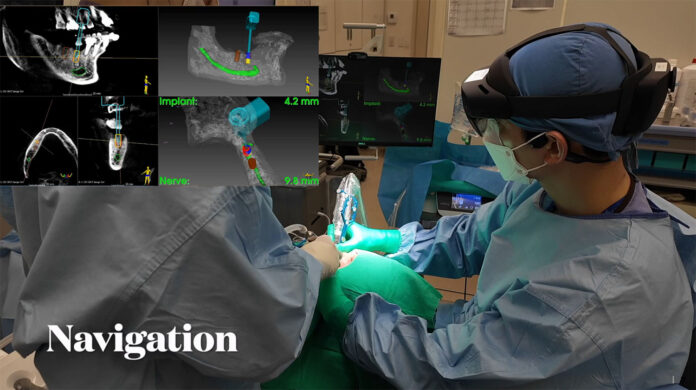Imagine a dentist placing an implant. It’s delicate work. One tiny mistake can lead to problems like numbness or nerve damage. To avoid such risks, most clinics rely on guides or freehand tools. But these traditional methods can be slow, inaccurate, or dependent on the surgeon’s experience. Patients deserve the best.
Enter XAVE‑MINI, a new mini version of a surgical navigation system that’s making waves. A4Lab, a fast‑growing South Korean startup, will introduce it at CES 2026. It is designed to help dentists see exactly where their tools are in real time. Just like turning on map directions for a car, the system shows a live view of the patient’s jaw, nerves, and tools on a screen. With that guidance, surgeons can work faster and safer, and even less experienced dentists can perform with confidence.

What makes XAVE‑MINI special is its fast and reliable image registration. Normally, registering the patient’s scanned images with their actual anatomy can take up to 30 minutes, and failing more than half the time was not uncommong in the industry.
A4Lab says its system cuts that registration down to under one minute and, impressively, has achieved 100% success in over 600 clinical cases – with no failures so far. That’s a huge leap forward.
One interesting detail is that XAVE-MINI can work with XR headsets such as Microsoft’s HoloLens. In this setup, the headset acts as a simple display, letting the surgeon see navigation data overlaid in their field of view. Unlike other systems that rely on head tracking, the precision here comes from infrared cameras and a bite-plate reference, so the results stay accurate no matter how the surgeon moves. This flexibility means clinics could use HoloLens or even other smart glasses as the interface, without sacrificing ease of use or accuracy.
To appreciate how big a deal this is, consider traditional methods. Many dentists use static surgical guides—rigid templates made before surgery that fit over teeth. While they help, they don’t adapt if things change during the procedure. Freehand placement depends on the surgeon’s steady hand and judgment, which can vary widely.
Some clinics use dynamic navigation, which tracks tools in real time, but registration can be time-consuming and, as we mentioned earlier, it often fails. Others are exploring AR-based systems that overlay digital guides into the surgeon’s view. These AR tools show promise, but many still rely on markers or cumbersome setup steps, which can slow down the process.
By contrast, XAVE-MINI promises a compact, plug-and-play solution that is relatively affordable (in its class). It’s roughly the size of a 20-inch carry-on suitcase, making it ideal for clinics with limited space, or for outreach and training. At CES, A4Lab will be showing how this compact device can fit right into real dental environments—bringing speed and safety to everyday practice.

Looking further ahead, A4Lab sees navigation as a stepping stone to something bigger: surgical robots. Just as car navigation laid the groundwork for self-driving features, surgical navigation could form the base for robots that perform delicate procedures with even greater precision. By first building trust through dental and facial surgeries, the company aims to gradually automate more steps, moving toward a future where robotic systems handle tasks that today depend on human skill alone.

A4Lab isn’t some giant tech company. It’s a young, agile startup—less than three years old—and already strong with a team of eight industry experts in clinical navigation, regulatory affairs, and development. They’ve earned South Korea’s KGMP (Good Manufacturing Practice) certification, meaning the system meets the strict quality standards for medical devices.
The potential market for this kind of technology is growing quickly. Surgical navigation systems were worth about $1.8 billion globally in 2024 and are expected to reach $3.3 billion by 2030, with demand rising as patients ask for safer, less invasive treatments.

Dental navigation is still new, but it’s one of the areas where interest is expanding fastest. A4Lab’s plan is to start with dental clinics, then move into related fields like facial and ENT surgery, and eventually broaden into full surgical navigation and robotics. Their approach combines selling the device with ongoing revenue from software and single-use components, which means once the system is in use, it can continue to generate value for both the company and the clinics using it.
This CES debut could be a pivotal moment. If XAVE-MINI lives up to its claims, it could change how dental implant surgery is performed—making it quicker, safer, and more accessible. And that could mean better outcomes for dentists and patients around the world.
Filed in . Read more about CES, CES 2026, Korea and Startups.
